A couple of weeks back, during our discussion of "Whitey's on the Moon," I went on at some considerable length about serialized anthology shows, and how they take tremendous creative risks in basically reinventing themselves with each new chapter. The "tl;dr" version of the point I was trying to make, however, is this: Not every episode is going to work for everyone. Now we have an episode of Lovecraft Country that underlines my thesis: "A History of Violence," written by Misha Green, and directed by Victoria Mahoney.
From the beginning, we knew Lovecraft Country was going to be a tricky and delicate concoction, attempting each week to mix pulp-fiction genre storytelling, poignant social commentary, and emotional character drama in daring new combinations. Last week's entry, "Holy Ghost," was—for me—the most fulfilling dish Lovecraft Country has yet served: a delicious and satisfying meal of an episode in which all those improbable ingredients enhanced and enriched each other. Now, however, just one week later, we get "A History of Violence," an episode that throws all those same ingredients into a pot and comes up with a disappointing hash in which none of those flavors taste particularly good.
As I've said, it's a hard recipe to get right, and sometimes it's going to go wrong. Sorry, folks, this one just didn't work for me. As a result, this review is going to be a bit more "review-like"—and uncharacteristically shorter—than my usual, overly-obsessive rantings.
"Ain't shit new about it."
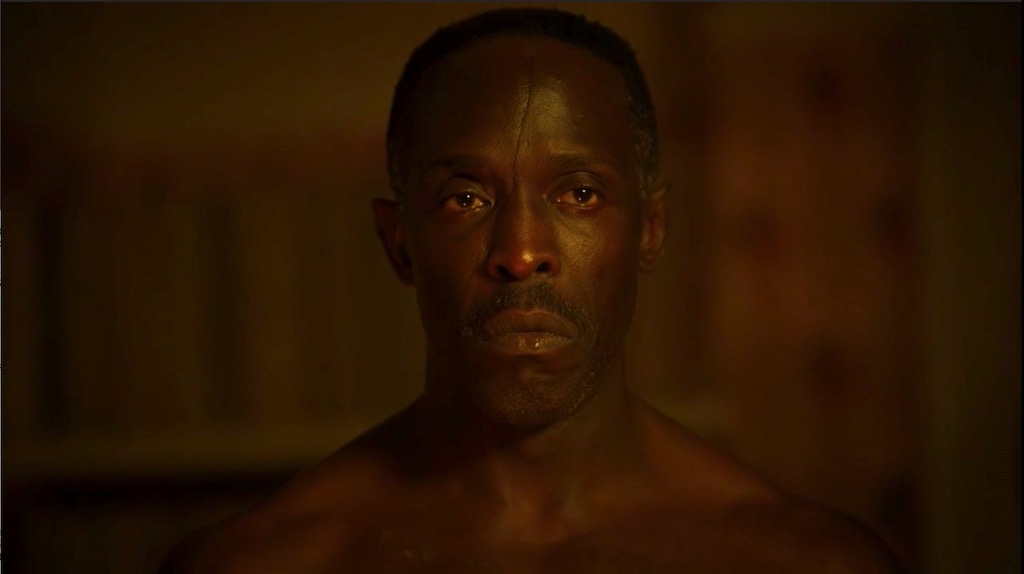
In my reviews of Lovecraft Country so far I've been talked about how much I love cold opens, and the ways in which they help attune the viewer into the right mindset to appreciate each particular episode. Sometimes, however, a cold open tries to do too much work on behalf of the episode, and becomes—in retrospect—an overly elaborate bow on a sadly disappointing present. The opening moments of "A History of Violence," alas, are tonally out of place with the rest of the hour, and promise us an episode of television that we're not actually going to get.
We open on a drunk and despairing Montrose, listening to Cold War propaganda on the radio. "If the United States fails to proliferate its stockpile of nuclear bombs, the barbaric Soviet Union will wipe out civilized America," it says. "We have entered a new global age." And we hear Montrose's thoughts in response: "Ain't shit new about it. Whitey keep cooking up death for the rest of us to eat." We watch him crying over old photos of Montrose, George, and Dora, and we hear fragmented flashbacks to both recent events and his own abusive childhood. (This includes what sounds like his father beating him for putting a flower in his hair and "preening in front of the goddamned mirror.") All of this overlaps in Montrose's mind as he nearly descends—in operatic, Martin-Sheen-in-Apocalypse-Now fashion—into drunken madness.
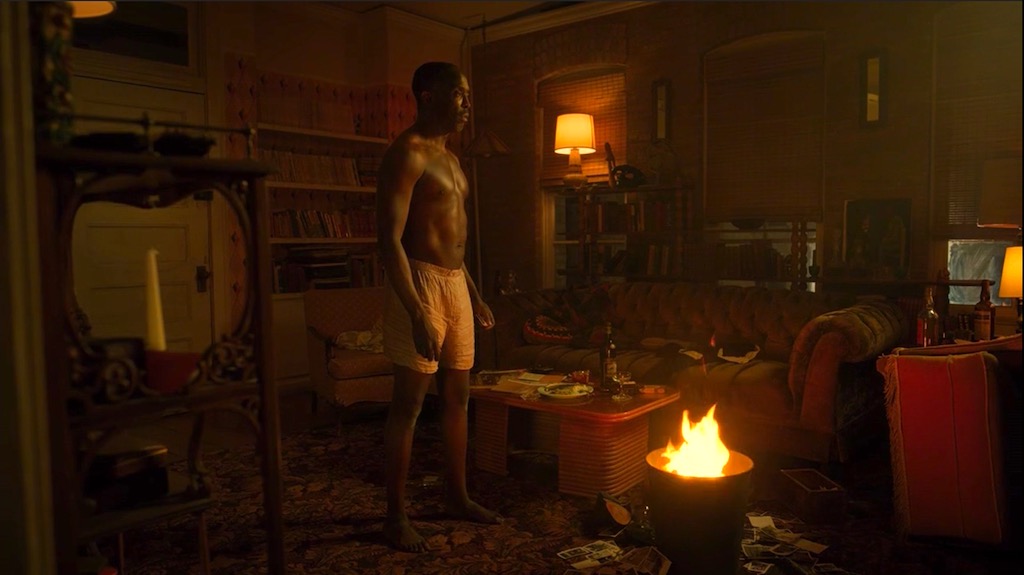
On paper, I can see how this was all supposed to work. "A History of Violence," from a plot perspective, is about the arms-race between our heroes and the Order of the Ancient Dawn, with Tic and Leti determined to find the missing pages from the Book of Names before the Order does. So the Cold War analogy makes sense. ("We need to be able to defend ourselves," Leti says later, and Montrose calls back to the news of the U.S./Soviet rivalry. "We're the Reds in this fight," he tells them. "That means outnumbered, outgunned, and fumbling to catch up.") And, as far as the relationships between the characters, "A History of Violence" is also going to attempt to tackle the estrangement between Tic and Montrose, so here we get a taste of Montrose's relationship with his own father, and the damage that it did to him.
And, in a larger thematic sense, Lovecraft Country is largely about how white racism and unchecked imperialism has translated into generational trauma for BIPOC communities. (The series is primarily focused on Black Americans, of course, but the end of "A History of Violence" will make the connection to the genocide and exploitation of indigenous peoples.) It is also clear, at this point, that the show has a point to make about the dangers of fighting oppression by adopting the dehumanizing tools and strategies of the oppressor. (This is a pattern we can see in the destructive escalation of the Cold War, and perhaps—on a more personal level—in the path of Montrose's own life, beaten as a child for showing his gentler side, and growing into an abusive father himself. "You were brimming with love as a boy," George told him a few episodes ago. "Despite being afforded so little.")
So it seems to make perfect sense that this episode opens with themes of imperialism, abuse, homophobia, and the lunacy of mutually-assured destruction, while promising a magical arms race and a focus on the relationship between Tic and Montrose. But it's a lot to be getting on with, and—as we shall see—both the thematic scope and the emotional weight of this cold open is out of proportion with the rest of "A History of Violence."
"You wanna run chest-first into some magical treasure hunt like a goddamned fool."
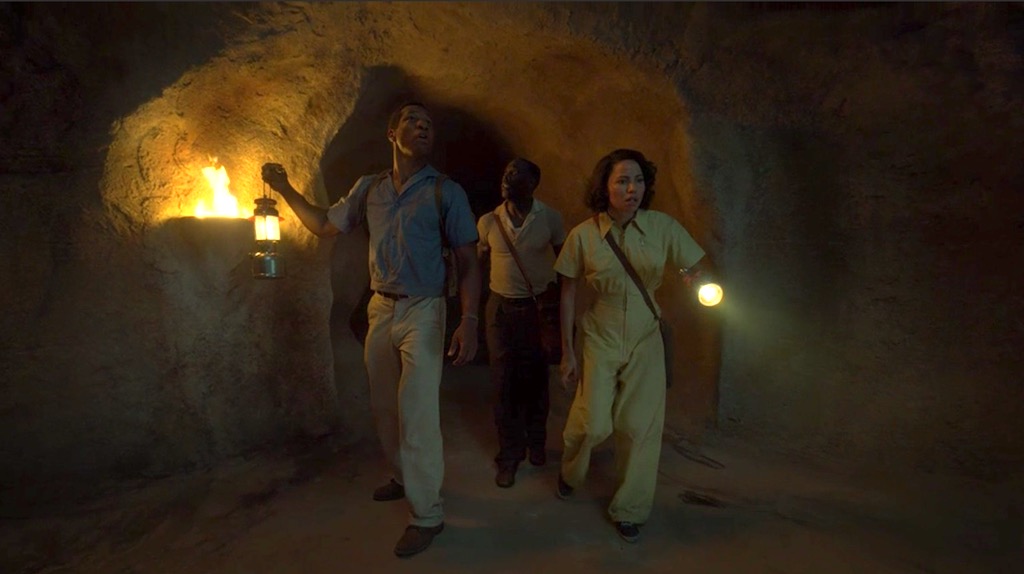
For "A History of Violence" is not prepared to really deal with huge political themes or deep emotional trauma: It's a plot-moving episode, a genre pastiche episode, and a fundamentally silly episode—or, at least, it should have been.
There's nothing wrong with silliness, after all. In fact, Lovecraft Country would be an exhausting show if it was all systemic racism and emotional trauma, so following a darker, more emotionally substantial episode like "Holy Ghost" with something slightly frothier was far from a bad idea. (There's no point in pretending we don't all watch this show as much—or more—for the monsters as we do for the message.) This is, in fact, what Misha Green does so well: She tackles important issues, but she channels them through genre conventions and makes them fun.
And, considering Green's overall project here of putting a Black perspective on pulp-fiction tropes, it was probably inevitable that we would get this kind of story at some point in the series. Modern audiences will relate to this as an "Indiana Jones" type adventure, but of course Raiders of the Lost Ark itself was a pastiche of older stories, influenced by the Republic Serials of the 30s and 40s, which were influenced in turn by the pulp fiction stories of people like Jules Verne, Edgar Rice Burroughs, H. Rider Haggard, and others. Given the prominence of these sorts of tales in popular American culture—and, as we've already discussed, their tendency to be incredibly racist tales of white colonialism—a little museum-raiding, cave-spelunking, and deathtrap-dodging was almost inevitable for the heroes of Lovecraft Country.
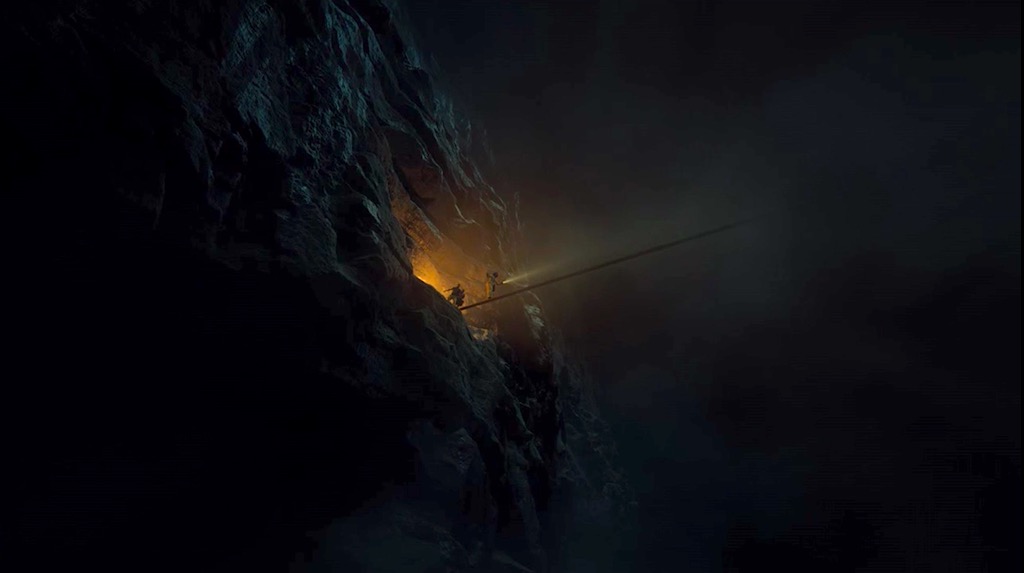
An action-adventure heavy, Raiders-style episode would have been fun. But "A History of Violence" tries to do too many things at once here, and ends up doing none of them particularly well. It tries to seed the adventure with the overall theme of the evils of white colonialism—it's right there in the title—but most of the actual historical commentary in this episode feels both simplistic and superficial. For example, we overhear a museum docent explaining how all the artifacts in the Titus Braithwhite Wing were "gifts," given to the "famed explorer" in exchange for "teaching the savage tribes the ways of civilized man." But the irony of that assertion is so obvious, and its delivery so fleeting, that the moment barely registers as more than scoffing: It all just feels a little phoned-in. (The same was true for me—though on a larger and more problematic scale—with the Native American commentary at the end of the episode, but we'll discuss that a little further on.)
Perhaps we can forgive "A History of Violence" for not trying to make sophisticated political points in the middle of a Raiders-style runaround. (Twenty minutes of Tic and Leti standing around discussing how the museum industry is built on the colonialist exploitation, conquest, and pillaging of oppressed cultures might, admittedly, have slowed down the momentum a bit.) But the episode gives similarly short shrift to the character drama. By the end of "A History of Violence" we are supposed to believe that Tic has reached emotional catharses with both Leti and Montrose—he gets a passionate kiss from one, and an "I'm proud of you, boy" moment with the other—but I'll be damned if I know what either was based on. There is a lot of bickering, sniping, and airing of resentments along the subterranean obstacle course leading to Titus's vault, but there is very little genuine conversation, and none of it seems to speak to the real issues between the characters. As a result, the big conciliatory moments at the end do not feel particularly earned. (This is a larger problem in a show that has struggled to create meaningful emotional connections between its characters, and—with the exception of Leti last week—between the characters and the audience.)
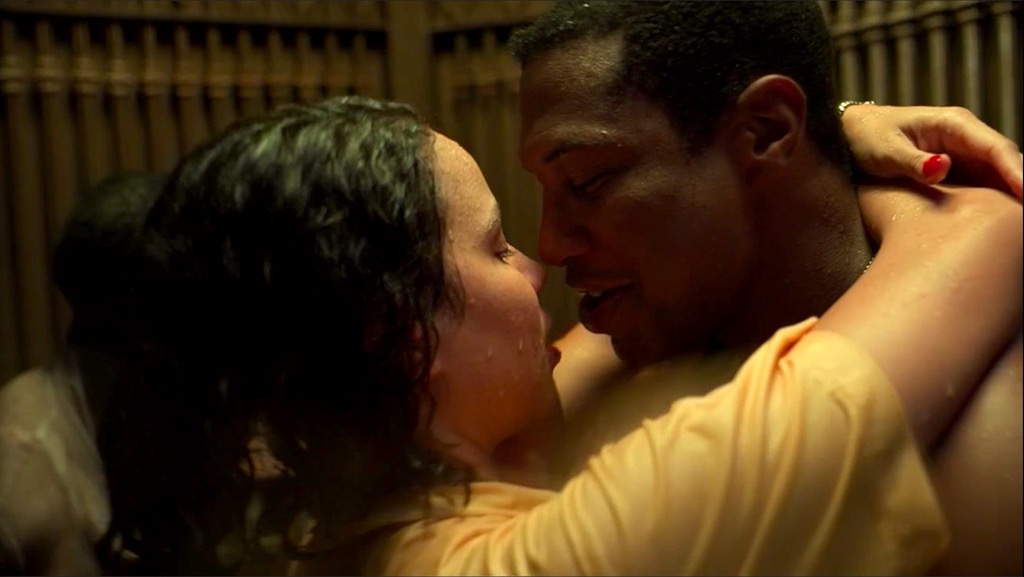
Still, as I've said, we can decide to forgive "A History of Violence" for using emotional shorthand in the character department, and we can decide to forgive it for skimping on the historical commentary. What I have more trouble forgiving, however, is that it sacrificed both those elements for a clichéd genre adventure that just isn't very fun. Even simply viewed as an action-adventure episode, there's a depressing dullness of execution here, and a lack of imagination that feels almost like indifference. The physical obstacles are so familiar as to be yawn-inducing. (A precarious chasm, a swinging pendulum, and some slowly rising water are such standard issue challenges that I found myself comparing the episode—and not favorably—to a Crash Bandicoot game.) The puzzle challenges evidenced even less effort, to the point where the episode couldn't even take a moment to properly explain each one before solving them. (In the museum, our heroes have barely arrived at the statue of Titus before a convenient beam of moonlight pops the thing open. Later, crossing the chasm, we are not even shown the puzzle on the door before Montrose has figured out how to solve it.) This is just bad storytelling: As the audience, we are not invited to play along, and we are not encouraged—or even allowed—to feel any suspense or mystery.
So I'm not really bemoaning the shallowness of the intellectual and emotional content here, so much as objecting to the squandering of an opportunity for real fun. How much better would "A History of Violence" have been if it had really committed to the adventure-serial format, narratively and stylistically? If you want to give us a comically quick and bizarrely uneventful cross-country trip—in contrast to the slow, harrowing one in "Sundown"—then give us the traditional Raiders of the Lost Ark-style, sepia-toned montage of a line moving across a map. If you want to play with the trope of exploring ancient ruins, give us some cleverly designed puzzles to solve. If you want to do an episode that primarily requires physical bravery from the characters, then give us some genuinely exciting cliffhangers, and some thrilling moments of daring do. (I want to see giant rolling boulders, not just walking down unconvincing corridors and trudging through dank water. I want to see our heroes swinging across chasms, not just inching across a plank infested with magical termites.) I would have been all on board for a thrilling action-adventure pastiche, but, sadly, neither Green's imagination nor Mahoney's direction was up to the challenge here.
"I'd never encountered people with so much hunger."
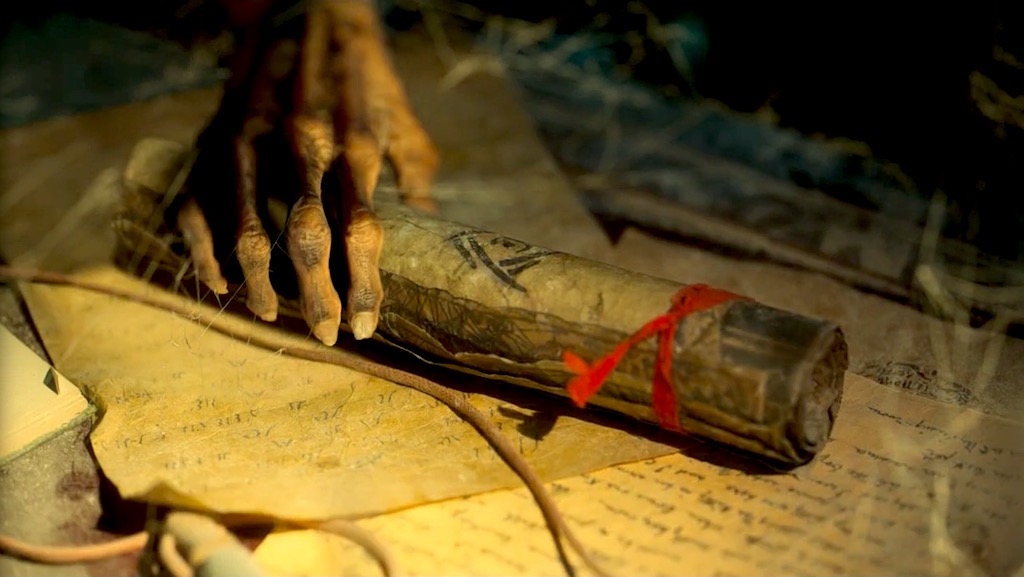
Where all this unimaginative spelunking leads is more interesting, but also more troubling. Tic's Braithwhite blood ends up opening Titus's vault, and what they find inside are the stolen treasures—and the mummified bodies—of Native Americans.
As Lovecraft Country's primary focus is the experience of Black Americans, the history of the white colonizers' reprehensible treatment of this hemisphere's indigenous populations has been something of a missing narrative in the series. (This is a criticism that I think can also be fairly lobbed at the show's similarly themed predecessor on HBO, Watchmen. That series was set in Oklahoma—the actual endpoint for the Trail of Tears—but there were no indigenous characters and Native American history was barely mentioned.) So it was exciting to see Lovecraft Country opening this door here, and tying the genocide and exploitation of America's indigenous nations into its larger narrative of white supremacy horrors.
For guarding the magical MacGuffin is an intersex Arawak person called Yahima (Monique Candelaria), whose mummified and cobwebbed body restores to life as soon as Tic reaches for the scroll. Tic—who magically understands Arawak—translates Yahima's story, as they tell of how Titus came to their lands in search of someone to translate the Book of Names. "I had no reason to distrust him," Yahima says of the first white man they ever saw. "I'd never encountered people with so much hunger." Yahima, realizing Titus's true nature, refused to help, and so was imprisoned here along with the murdered bodies of their fellow tribe members.

This is all good stuff. (I particularly like the suggestion that the magic is not white man's magic: It is older than the white man's presence on this continent, and he stole it like he stole everything else. I also appreciated the fact that Montrose—after Yahima refuses to help them—roughly grabs the pages anyway: This ties nicely into the theme of the dangers of fighting oppression by becoming the oppressor.) But this scene should have been what the entire episode was about: It should have been more developed, and it should have tied the entire episode together—from the title, to the Cold War stuff in the cold open, through the museum scenes, and back out to Lovecraft Country's overall theme of white supremacist crimes. But somehow, after all faux Raiders stuff that led to it, it feels both tacked on and trivialized here. The episode finds nothing particularly interesting to say about it, so Yahima's trauma—and by extension that of their people—is reduced to a thin reproduction of the Holy Grail scene in Indiana Jones and the Last Crusade.
What's worse, Yahima is completely othered here, and this scene feels more than a little exploitative. When Yahima's desiccated body comes to life it is played as an EC Comics-style horror scare; when they take flesh, they are fully naked, their breasts and intersex genitalia displayed for titillation. This one-two punch of horror-shock with body-shock is doubly-dehumanizing, and completely unnecessary, bringing unfortunate flashbacks to such exploitative horror fare as the transphobic slasher film Sleepaway Camp. Yes, Lovecraft Country has trafficked in repurposed horror tropes all along, but it is one thing to subtly critique them, and something altogether different to simply imitate them.
Candelaria's performance is good enough that she might have saved the character, and there is a moment when it appears Yahima might be joining our intrepid crew as a regular, which would have been very welcome, creating a larger, intersectional team in the battle against white supremacy. But then the episode ends without even that hope of redemption: Montrose—probably under the auspices of "protecting" Tic from all this magic shit—slits Yahima's throat, revealing them to have been—from a creative standpoint—an exploited, throwaway character all along. Just an object, just a disposable plot device, and never intended to be a person at all.
There may yet be more interesting things happening with this material. (That remains to be seen.) And—given the revelations about his sexuality this episode—it may be intended that Montrose's murder of Yahima ties into his own self-loathing, as much as it does to any necessity of plot or thematic intent. (I'll wait to comment on all of that until I see where Lovecraft Country is going.) But ultimately, none of that makes it better: It's still the casual objectification and murder of an indigenous, non-binary person, without ever bothering to treat them like a human being first. Doing it just for plot purposes, or for Montrose's character development, makes it worse, in fact.
It troubles me, and the fact that it's tacked onto the end of a fairly shallow and derivative episode like "A History of Violence" is the first thing that really makes me worried about whether Lovecraft Country can responsibly pull off the project it has undertaken here. The danger of tackling racism through a pulp genre lens was always that Lovecraft Country might end up trivializing—or worse, exploiting—extremely sensitive material for fleeting sensationalistic entertainment. Misha Green has been pretty good about avoiding that trap until now, but "A History of Violence" feels like a clumsy and worrisome misstep.
Additional Thoughts and Favorite Bits
- As I'd already accepted this would be a shorter, slightly grumpy review, I decided to skip the Christina/Ruby scenes this episode, though they were actually the more interesting and better executed scenes in "A History of Violence." (Wunmi Mosaku is fantastic. I'm overdue to discuss Ruby's character in depth, but I'll save what I have to say for a later piece. I'm more than ready for a mostly Ruby-centric episode, and I trust we'll get it in the near future.)
- A couple of observations about the Christina/Ruby stuff, however. First: Christina and William are the same person, right? I confess that didn't occur to me before, though it should have, since we've pointedly never seen them together. (The more-or-less explicit revelation of that here feels like the sort of thing that should have resonated with other aspects of the episode—Montrose's denial of his feminine side, Yahima's intersexuality, etc.—but never quite did.)
- Second, a note (and a plea) to screenwriters and directors: No one really has sex on stairs. It's fucking uncomfortable—literally. Please stop writing those scenes.
- My favorite character this episode? The kid in the library (Ian McKay), who just wants to enjoy his Jules Verne, and wants Tic and Leti (and Lovecraft Country?) to shut up about all this other crap and leave him in peace.
- I find myself torn about the discovery that the tunnel beneath the museum in Boston somehow leads to the basement of Leti's house in Chicago. On the one hand, it's a laughably convenient plot device, and one the characters don't even seem to question, as if they don't notice they've travelled 1,000 miles after walking for about an hour. On the other hand, the symbolism of a secret network of white supremacist tunnels linking every city across the country this way just about works, and the reveal of Leti's elevator provided the only genuine "Oh, shit!" moment in an hour that needed more of them. All in all, let's call it a wash.
- That's it for me this week. Sorry, I just wasn't feeling this one, and—as my long-time readers may have noticed before—I actually hate writing these sorts of reviews. (In fact, at the point where I find myself "reviewing" an episode—instead of just discussing it—something has gone seriously wrong.) I was actually tempted to skip this one altogether, but instead I tried to get through it as quickly and painlessly as I could. No hard feelings, Lovecraft Country: On to the next.

1 thought on “<I>LOVECRAFT COUNTRY</I> GETS LOST DOWN A GIANT PLOT HOLE IN "A HISTORY OF VIOLENCE"”
Yes, killing Yahima again so soon after returning from the dead wastes not only the Native American perspective but also the character's fish out of water potential for dealing with future shock.
Tic and Leti (Montrose seems to have other plans) are in a race to get the missing pages before the Order does, but it was Christina, offspring of the Order's former leader, who tipped Tic off about the existence of the pages. Are Tic and Leti prepared for Christina (or William) coming for the pages now that they have them?